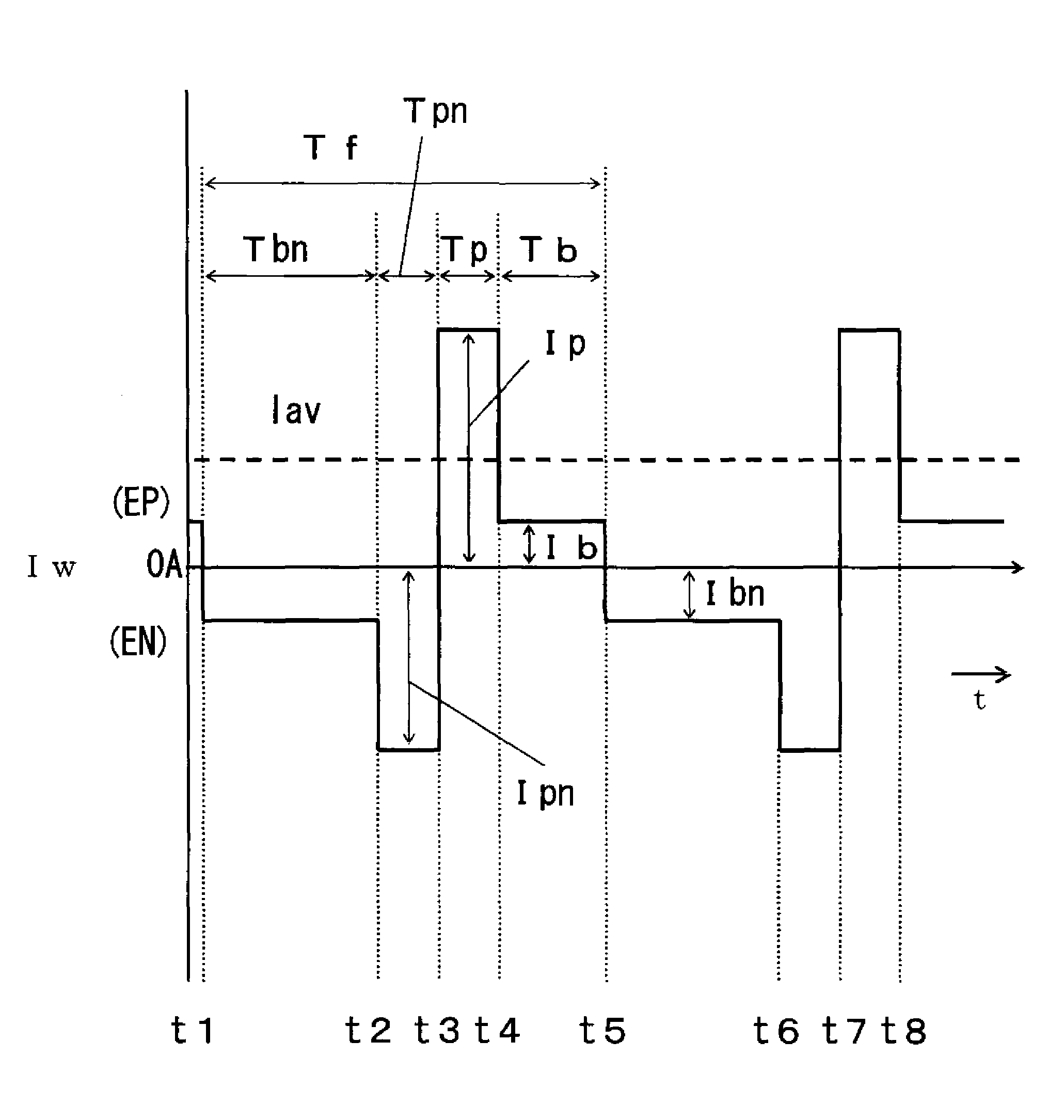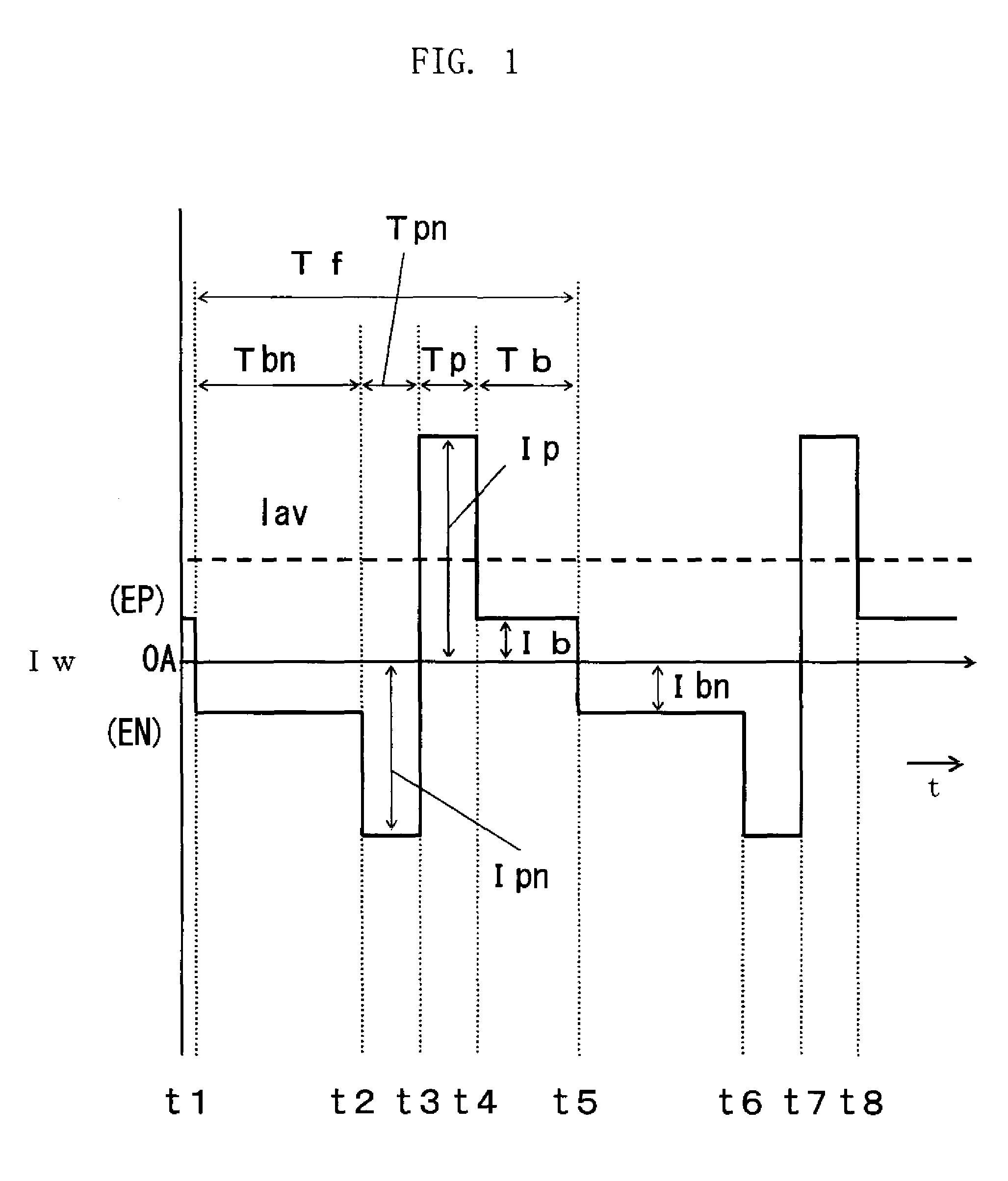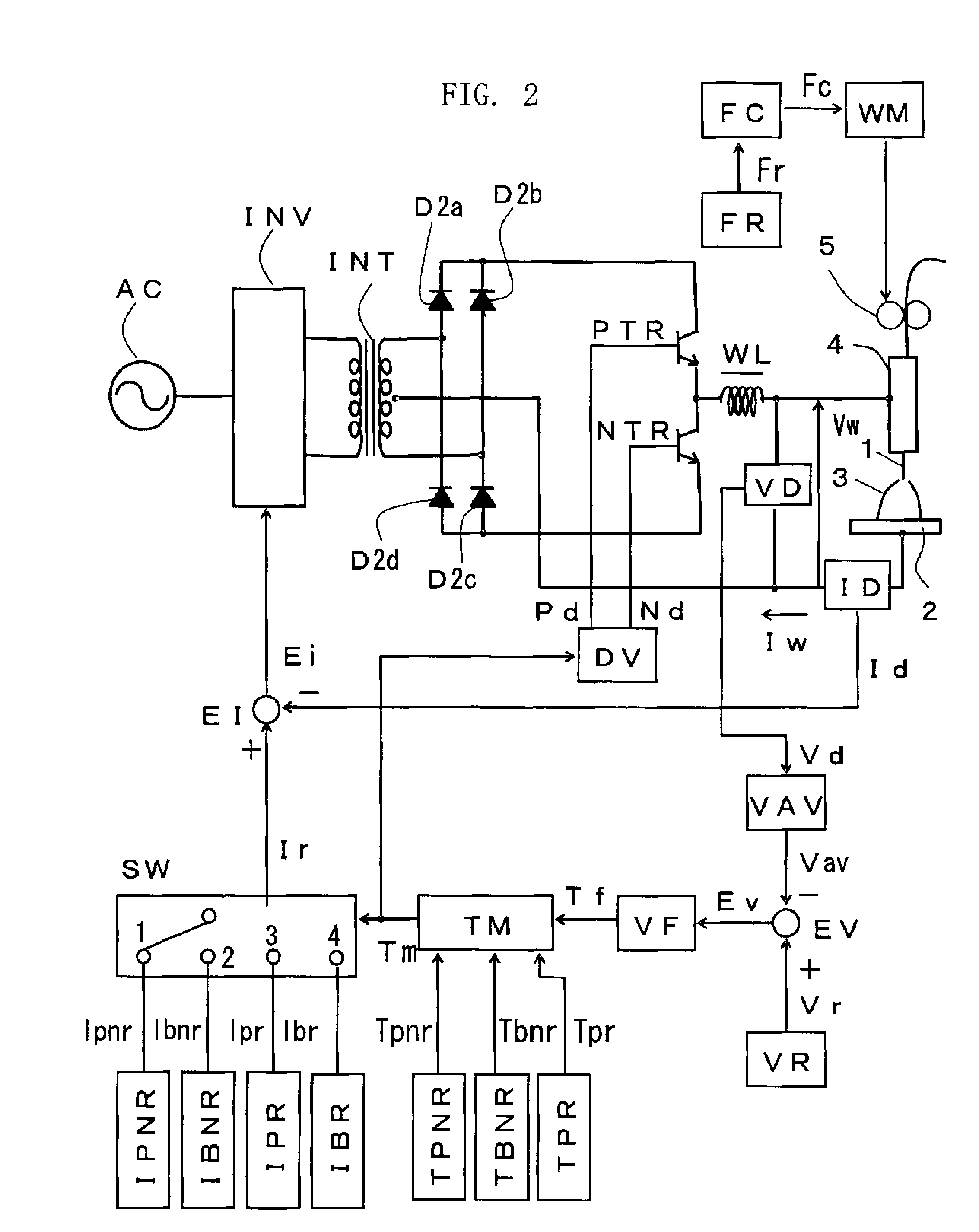AC pulse arc welding control method
a pulse arc and control method technology, applied in the direction of arc welding apparatus, welding apparatus, manufacturing tools, etc., can solve the problems of large droplets, inability to achieve the 1 pulse-1 droplet transfer, and small droplet formation, etc., to achieve the effect of stable welding sta
- Summary
- Abstract
- Description
- Claims
- Application Information
AI Technical Summary
Benefits of technology
Problems solved by technology
Method used
Image
Examples
first embodiment
[0032]FIG. 1 is a welding current waveform chart of a welding current Iw for illustrating an AC pulse arc welding control method according to the present invention. In FIG. 1, the upper side above 0 A corresponds to the electrode positive polarity EP, while the lower side corresponds to the electrode negative polarity EN. In the illustrated case, an electrode negative polarity current ratio (to be noted below) is set to a higher value greater than the maximum value lying in a normal range (typically, 0 through 30%). In the present embodiment, as noted below, the prevention of arc breakage in polarity switching is attained by applying high voltage across the welding wire and the base metal for a very short period of time.
[0033]During an electrode negative polarity base period Tbn from time t1 to time t2, an electrode negative polarity base current Ibn the absolute value of which is smaller than a critical value (more precisely, a critical value for negative polarity) is applied. Duri...
second embodiment
[0061]As noted above, when the electrode negative polarity current ratio is set to a large value, a droplet is begun to form in the electrode negative polarity base period Tbn, and the size of the droplet to be transferred in a peak period is large. In the light of this, the present invention provides two successive peak periods, i.e., the electrode negative polarity peak period Tpn and the electrode positive polarity peak period Tp. With such two peak periods opposite in polarity, the transfer of a large-sized droplet can be performed properly.
[0062]Further, in the second embodiment, the electrode negative polarity current ratio Ren can be set to a large value more easily by removing the electrode positive polarity base period Tb (see FIG. 1) as well as by employing two peak periods opposite in polarity. In the second embodiment, the ratio Ren is changed by varying the electrode negative polarity peak period Tpn or the electrode negative polarity peak current Ipn or the electrode n...
third embodiment
[0081]FIG. 8 is a block diagram of a welding power source for implementing the above-described AC pulse arc welding control method according to of the present invention. In FIG. 8, elements which are identical or similar to those described with reference to FIG. 2 are indicated by the same reference symbols. As seen from FIG. 8 and FIG. 2, the electrode negative polarity peak current setting circuit IPNR in FIG. 2 is replaced by another electrode negative polarity peak current setting circuit IPNR2 indicated by a rectangle of broken lines. The second electrode negative polarity peak current setting circuit IPNR2 outputs an electrode negative polarity peak current setting signal Ipnr which is an oscillating square wave having a predetermined maximum value, amplitude and duty, and oscillating at a predetermined oscillation frequency.
[0082]A timing chart of the signals in the welding power source in FIG. 8 may be basically the same as that of FIG. 3, except that the current setting sig...
PUM
| Property | Measurement | Unit |
|---|---|---|
| voltage | aaaaa | aaaaa |
| current | aaaaa | aaaaa |
| current | aaaaa | aaaaa |
Abstract
Description
Claims
Application Information
 Login to View More
Login to View More - R&D
- Intellectual Property
- Life Sciences
- Materials
- Tech Scout
- Unparalleled Data Quality
- Higher Quality Content
- 60% Fewer Hallucinations
Browse by: Latest US Patents, China's latest patents, Technical Efficacy Thesaurus, Application Domain, Technology Topic, Popular Technical Reports.
© 2025 PatSnap. All rights reserved.Legal|Privacy policy|Modern Slavery Act Transparency Statement|Sitemap|About US| Contact US: help@patsnap.com



